

Welcome to a new benefit of your subscription to Porter & Co… the Daily Journal Sunday Investment Chronicles: All the insight from the past week that you need to know, in one convenient place.
Every Sunday at 10 am ET we’ll be highlighting the most compelling insights from Porter & Co., in case you missed something during the week. And… we’ll also share the most interesting and valuable research from elsewhere in the worlds of investing, finance, and economics that we come across each week.
(Please note that the Sunday Investment Chronicles will replace our monthly Investment Chronicles publication… we’ll be delivering more insight to you, on a more timely basis.)
In other words… this is the Porter & Co. version of your Sunday paper that may have been part of your weekend routine in the past.
Questions or comments about our Sunday Investment Chronicles? Drop us an email at [email protected].
Last Week At Porter & Co.
Monday started with a boom – or rather, a loud crashing sound – as the Nasdaq fell 3.4%, and Magnificent 7 darling Nvidia (NVDA) fell 17% on the day. The cause was, as we wrote in Monday’s Daily Journal, was the AI version of a nasty flu out of China…
Chinese artificial intelligence (“AI”) startup DeepSeek shocked the tech world when it announced details of its groundbreaking large language model (“LLM”). DeepSeek achieved the same output that America’s leading AI giants have produced – for example, OpenAI’s ChatGPT and Anthropic’s Claude – with their LLMs, but at a fraction of the cost.”
The big question… is this the pin that the U.S. stock market bubble has been waiting for?… we said…
…while it’s too early to say, DeepSeek could be just that, at least for the exploding AI sector of the market. If a small, agile competitor can do the same thing as multi-trillion-dollar companies – at a tiny fraction of the cost, using cheaper, older GPUs – it’s bad news for the giants.”
For the week, NVDA is down 12% as of mid-day Friday… by comparison, the tech-heavy Nasdaq Composite Index is up 1.2% for the week.
On Wednesday, Porter tackled a question from reader Fred A., which is similar to ones we often get here at Porter & Co.: if the market is overvalued, should I sell the high-quality stocks that I’ve owned for a long time and have big paper gains on?…
Porter’s reply to Fred…
I didn’t tell you – or anyone else – to sell any great business. I told you that stock prices, as measured by a multiple of their earnings, are very likely to fall over the next several years and so, if you can’t hold them, then you should build cash now.
Obviously, if you hold great businesses and if you’re prepared to hold them for the long term, then there’s nothing to worry about. And I specifically explained that my warnings were primarily about overpriced tech businesses, not the kind of companies you’re asking about.”
In other words… if you have a 10-year time horizon, and you own world-beating businesses (for example, including many of those in the portfolio of The Big Secret on Wall Street, you have nothing to worry about). If, though, you hold massively overvalued tech stocks… that’s a different story. (Back in June we wrote about the poster child of “can’t miss” tech stocks from the dot-com era… this particular stock has yet to reclaim its 2000 all-time high. A quarter of a century is a long time to tread water.)
In Thursday’s Big Secret update, we recommended selling a stock we consider to be a classic value trap… that is, when a low valuation makes a stock seem like a good deal – but the reality is that that cheap price is justified by declining business fundamentals.
We added this particular stock to the portfolio back in January 2024 because it seemed to have suffered a temporary setback in a growth trajectory… turns out, that growth pause looks more like a permanent feature. Selling a stock at a loss – in this case, an 18% decline – is never fun… but it’s much better than selling when it’s down even more. And in the meantime… it’s taking up valuable capital that could be applied to a better opportunity.
… a better opportunity like one of our new Top 3 Best Buys in The Big Secret portfolio. Unusually, we replaced all three of our Top 3 Best Buys with compelling opportunities (which doesn’t mean we’re suggesting that the former Top 3 be sold… simply that we see something even more exciting in the portfolio).. The Top 3 list is designed to help subscribers understand where we see the best value in the portfolio… whether you’re a new subscriber, or looking to allocate funds to a new stock, it’s the place to start.
The new Top 3 are three household names, two of which are in the midst of what we think are short-term troubles… the other of which has turned the corner to massive cash flow profitability, after years of grinding through losses to get market share.
If you’re not yet a subscriber to The Big Secret… go here to learn how to become one. Or call Lance James, our Director of Customer Care, at 888-610-8895 or international +1 443-815-4447.
And, finally, in Friday’s Daily Journal, we wrote that today’s extreme valuations and the concentration of so much investment capital into so few stocks will lead to “a lost decade” for investors who hold the Nasdaq 100 or even the S&P 500. Then we asked: What should investors do when facing a lost decade in future equity returns?
The answer: Look for “lost stocks.” These are businesses that create incredible wealth by their own internal cash generation. These businesses are the absolute masters of capital allocation.
Porter presented five examples of “lost stocks”… which would be at the top of the buy list in the event of a correction.
What We Read Last Week
Out of the hundreds of sources of investment, finance, and economics news and insight we regularly review – our Bloomberg terminal, hedge-fund letters, annual reports, the financial news media, Securities and Exchange Commission (“SEC”) filings, investment newsletters, newspapers, X (Twitter) threads, conferences, podcasts, and more – here’s what we’ve read that we think you might find interesting.
Note: Quotes, transcripts, and excerpts are generally reproduced as they appear in the original.
Markets And Economics
Last year’s chaotic news cycles summarized in a single chart (from Axios)…

The 2016 post-election analog suggests the U.S. dollar could move significantly lower over the next several months (from The Daily Shot via X)…
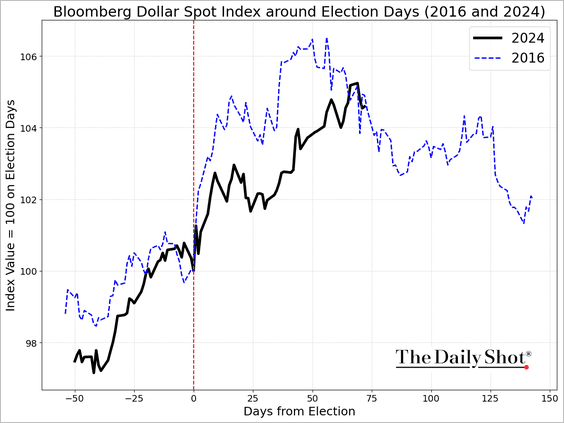
U.S. stocks typically struggle in the months immediately following a presidential inauguration (from Mike Zaccardi, CFA, CMT via X)…

Fund managers’ cash levels have dropped to their lowest point since June 2021, with institutional sentiment diverging from that of retail investors (from The Daily Shot via X)…
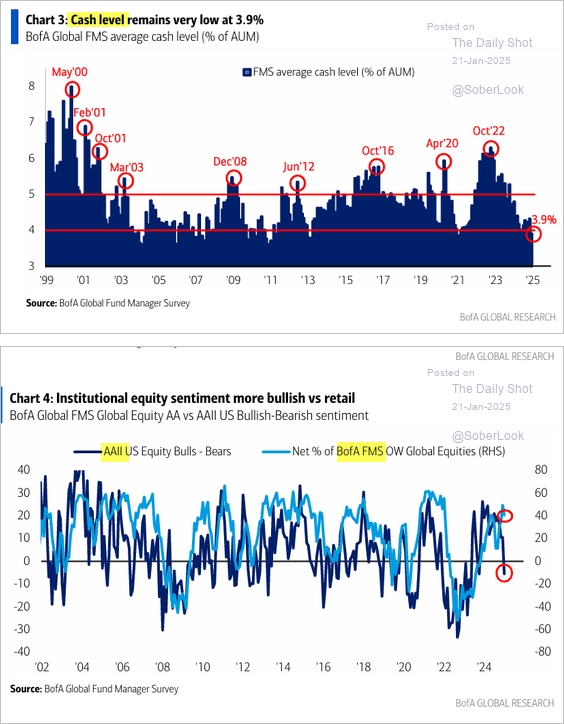
Keep an eye out for this “canary in the coal mine” signal for artificial intelligence (“AI”) and robotics adoption.
Corporate Insiders are dumping shares at the fastest pace in history (going back to 1988) (from Barchart via X)…
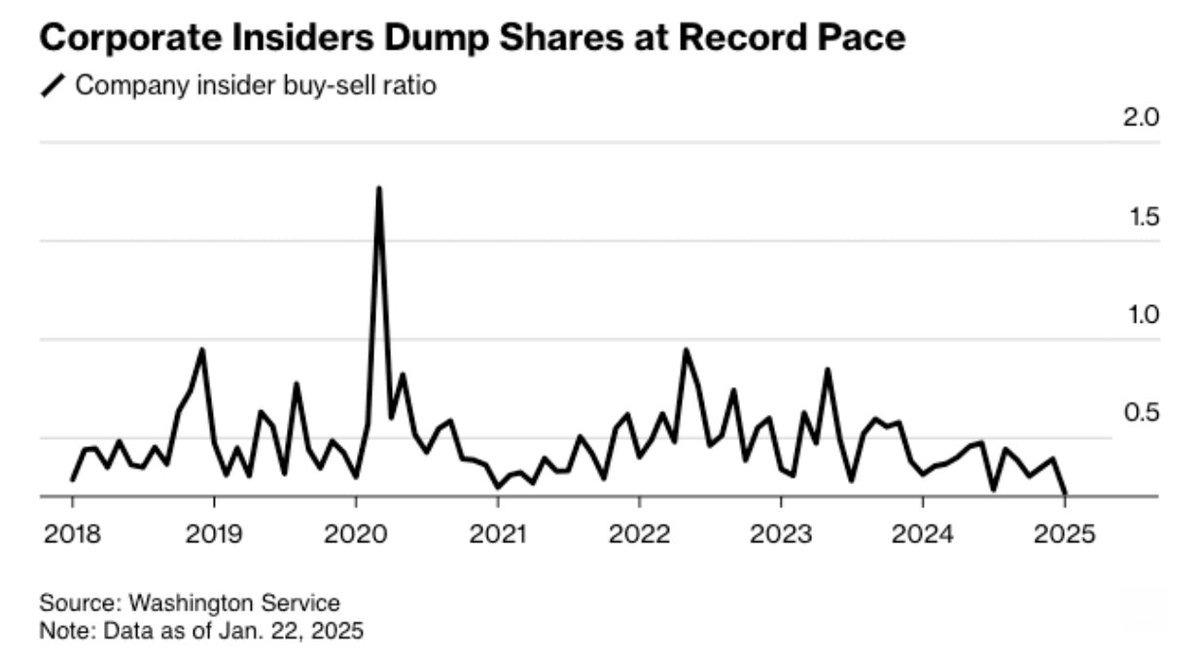
Renowned technology analyst Ben Thompson on how China’s “DeepSeek” AI will impact Big Tech companies.
The share of companies planning to raise prices remains elevated and has started to trend higher, pointing to higher inflation (from Torsten Sløk in The Daily Spark)…
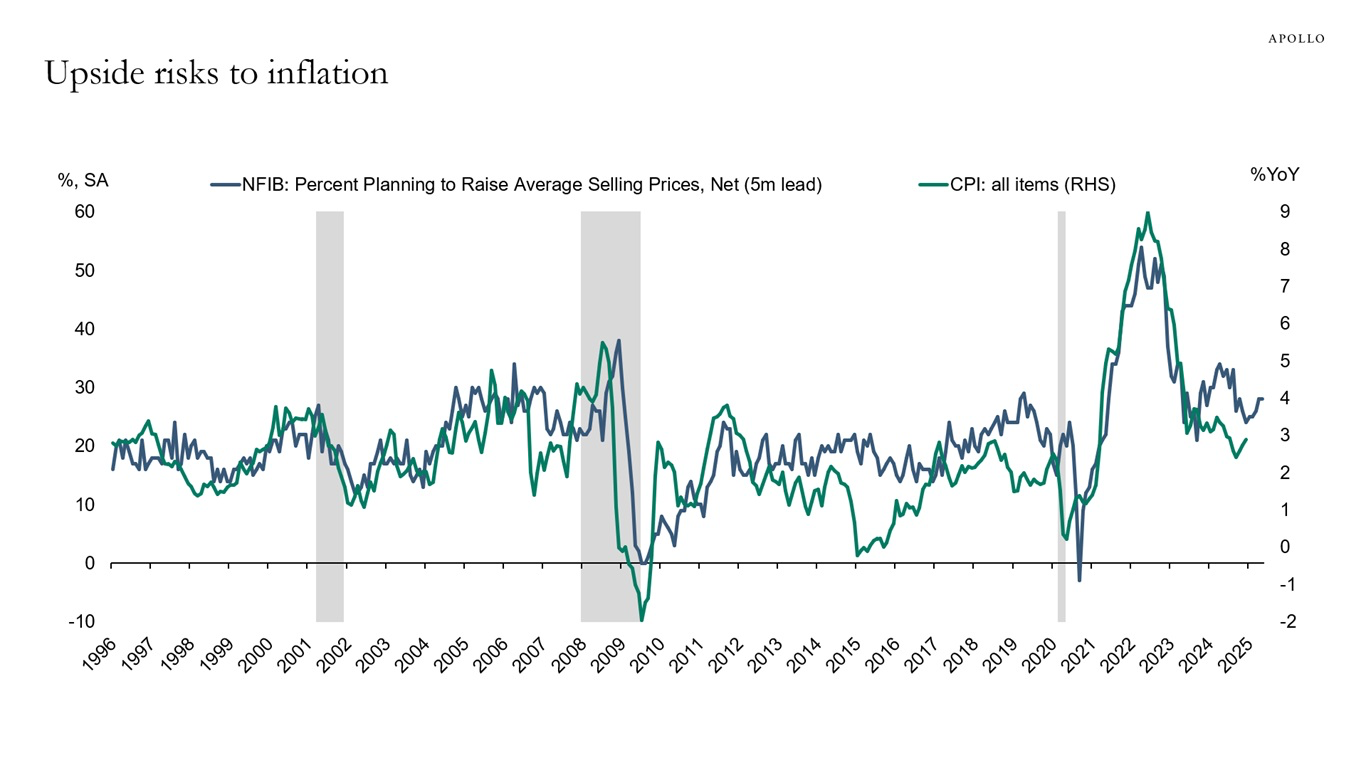
Year 3 of a bull market tends to be flat (from Grant Hawkridge via X)…
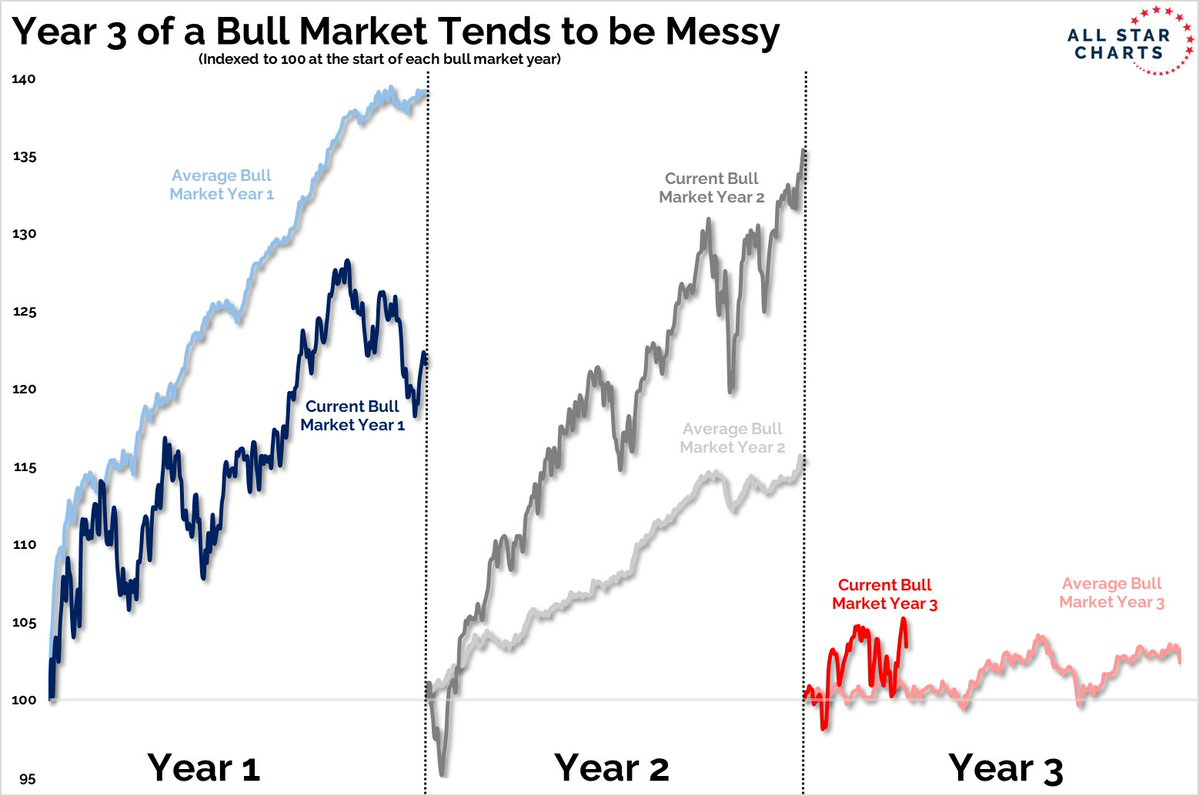
This is Morgan Stanley’s view on the DeepSeek “shock.”
Here’s a simple explanation of the “Jevons Paradox” with regard to DeepSeek’s impact on AI costs.
Why Trump’s tariff threats have the Fed more worried than in 2018.
This paper from the National Bureau of Economic Research destroys some common misconceptions about the wealthiest 1%.
Nvidia (NVDA) is in danger of losing its monopoly-like margins. But don’t count it out yet.
During Monday’s selloff, the Nasdaq-100-tracking Invesco QQQ ETF (QQQ) registered its largest daily inflow in over three years (+$4.3 billion) (from Tyler Durden via X)…
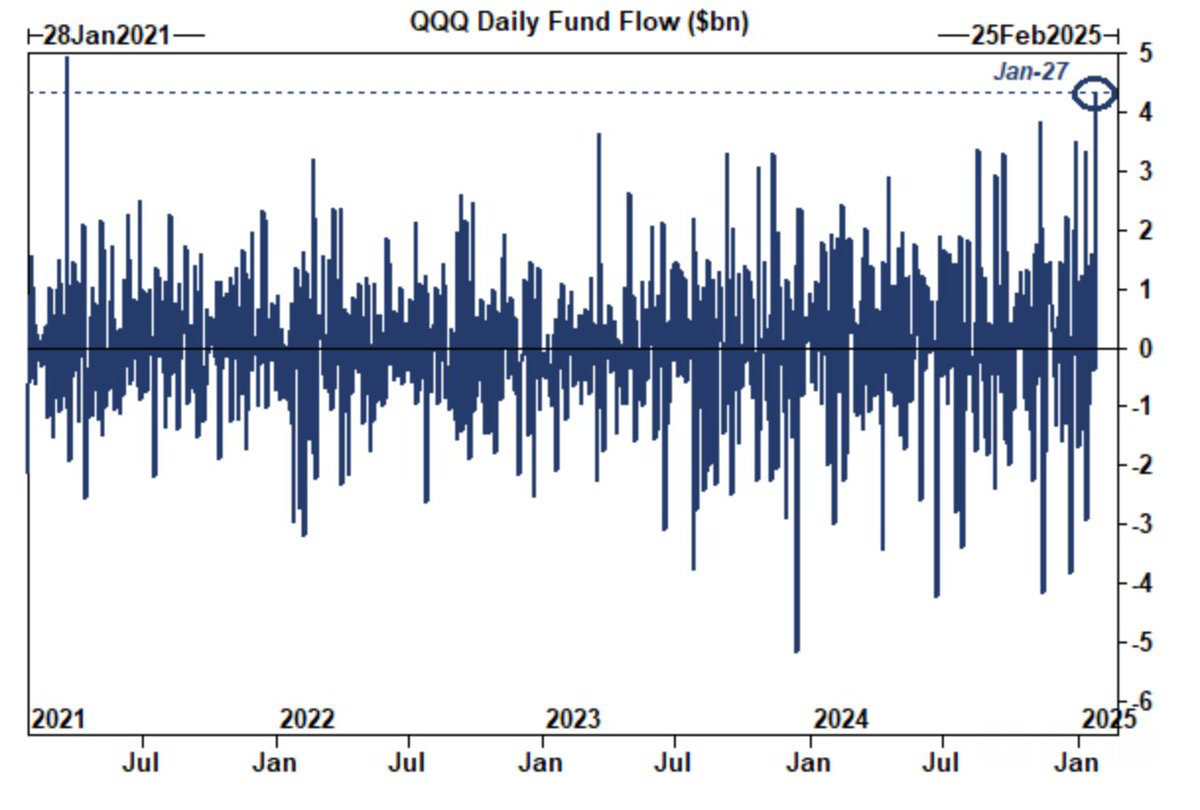
The minimum wage will increase in 23 states this year, including nine of the 15 most populous, most in the 3% to 10% range. Is that good for the Fed’s 2% inflation target? (from Quinn Thompson via X)…
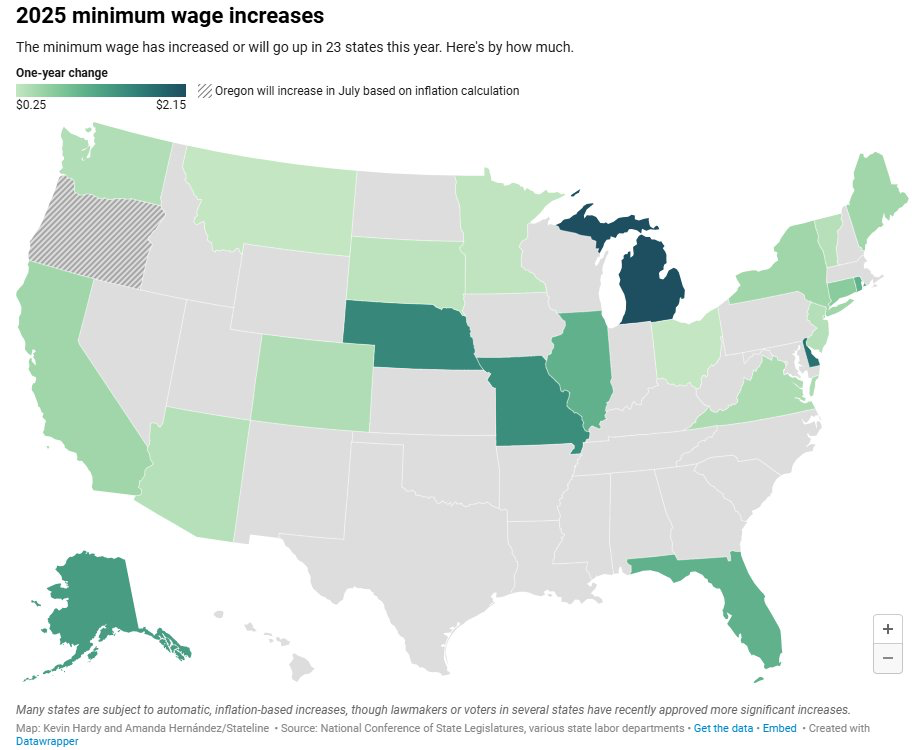
The DeepSeek correction in tech stocks has not changed the overall concentration problem in the S&P 500. Investors continue to be dramatically overexposed to the tech sector (from Torsten Sløk in The Daily Spark)…
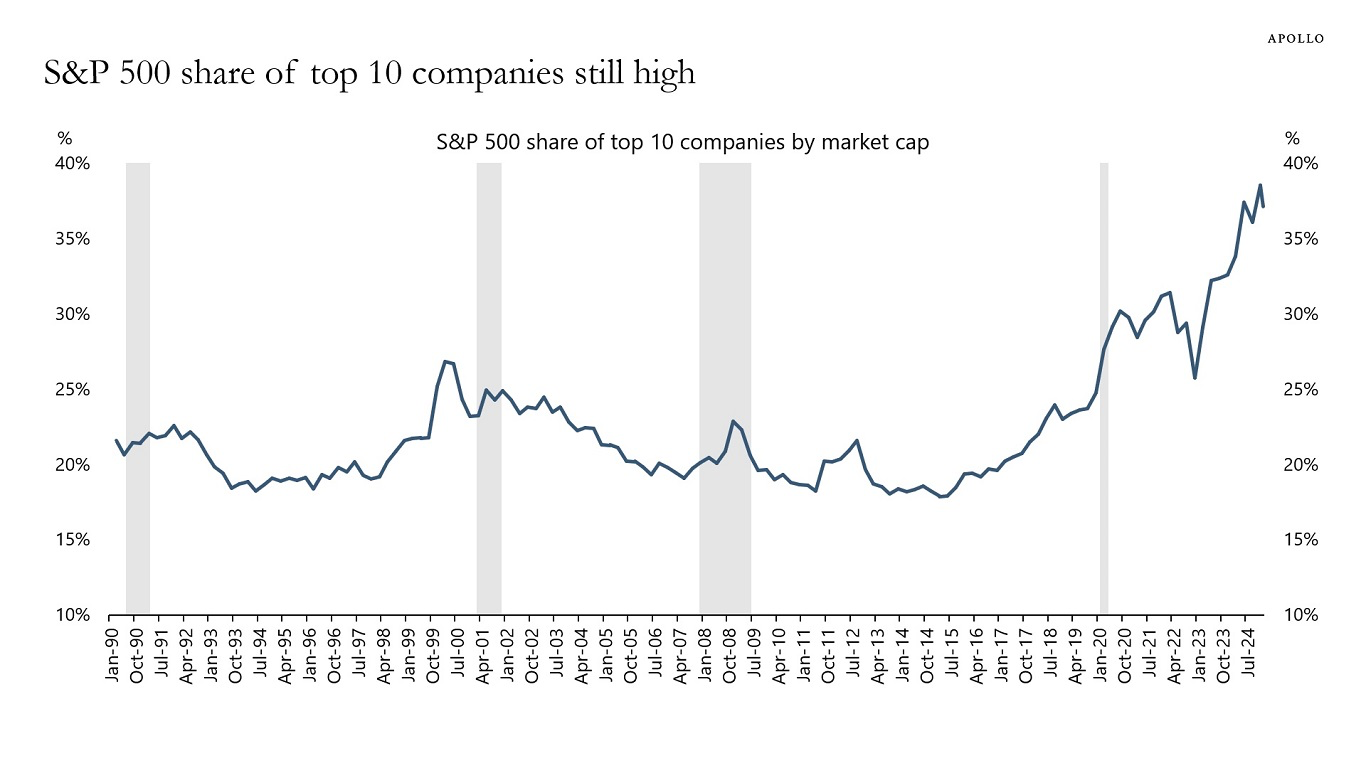
Goldman Sachs analysts believe the recent selloff is a correction and not the start of a sustained bear market.
Details on China’s secret war “playbook.”
Acadian Asset Management explains the seven pillars of market bubbles.
Here’s a list of all of President Donald Trump’s executive orders to date.
The Legends Speak
You can read every Amazon (AMZN) shareholder letter from Jeff Bezos (1997 to 2017) in one downloadable PDF.
How Warren Buffett earned a 39% internal rate of return.
Here’s an unusual and interesting 10-year outlook from renowned hedge fund manager Cliff Asness of AQR Capital Management.
Billionaire distressed-debt investor Howard Marks is officially on “bubble watch.”
In his latest letter to Greenlight Capital investors, hedge fund manager David Einhorn says we’ve reached the “Fartcoin” stage of the market cycle.
Investment Ideas
Here are 13 long investment ideas from Upslope Capital Management.
Minot Light Capital Partners shares a detailed investment thesis on digital fashion platform Mytheresa (MYTE).
Here’s a crowd-sourced list of 25 top investment ideas for 2025…
And here’s a crowd-sourced list of favorite non-U.S.-based stocks for 2025.
Netflix (NFLX) passes Buffett’s “good business” test. Why it’s leaving Disney (DIS) and Amazon (AMZN) behind (from The Wall Street Journal)…
Netflix has never been so popular, and it’s striking while the iron is hot.
The streaming giant picked its moment to announce price hikes Tuesday, capitalizing on a position of great strength. Netflix added 18.9 million paid subscribers in the fourth quarter, the most in the company’s history, taking it over the 300 million mark. That’s largely down to one-off live events, including the Jake Paul-Mike Tyson boxing match, and the success of original shows such as Squid Game.
It’s the last time Netflix will report net subscriber growth–what a time to retire the metric. Streaming services were once judged solely on subscriber numbers, but now the sector is fighting on a new front–the battle to aggressively monetize consumer attention.
Increasing advertising revenue is one way of doing it, another is by raising prices.
Netflix is leading the way, leaving Disney and Amazon in its wake. As legendary investor Warren Buffett once said: “If you’ve got the power to raise prices without losing business to a competitor, you’ve got a very good business.”
Continue reading here (subscription may be required).
Ten long-time hedge fund favorite investments that are still actionable today.
Citrini Research shares a broad AI investment thesis for a post-DeepSeek world.
Here’s a company with a $45 million market cap and a $54 million net cash position that appears to be on the verge of a serious inflection point.
These companies have maintained consistently high returns on capital for at least a decade.
Sovereign/Government Bonds And Credit
Interest payments on the U.S. national debt now exceed spending on national defense (from The Daily Shot via X)…
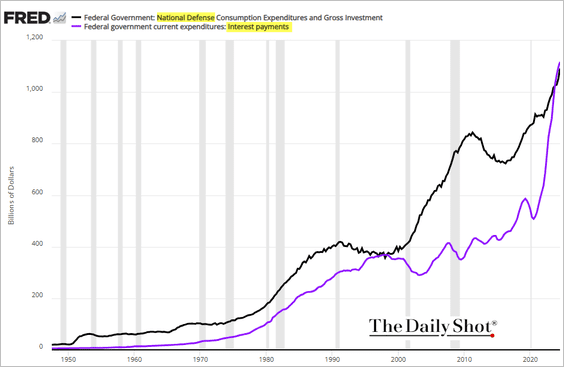
China continues to sell U.S. Treasuries (from Torsten Sløk in The Daily Spark)…
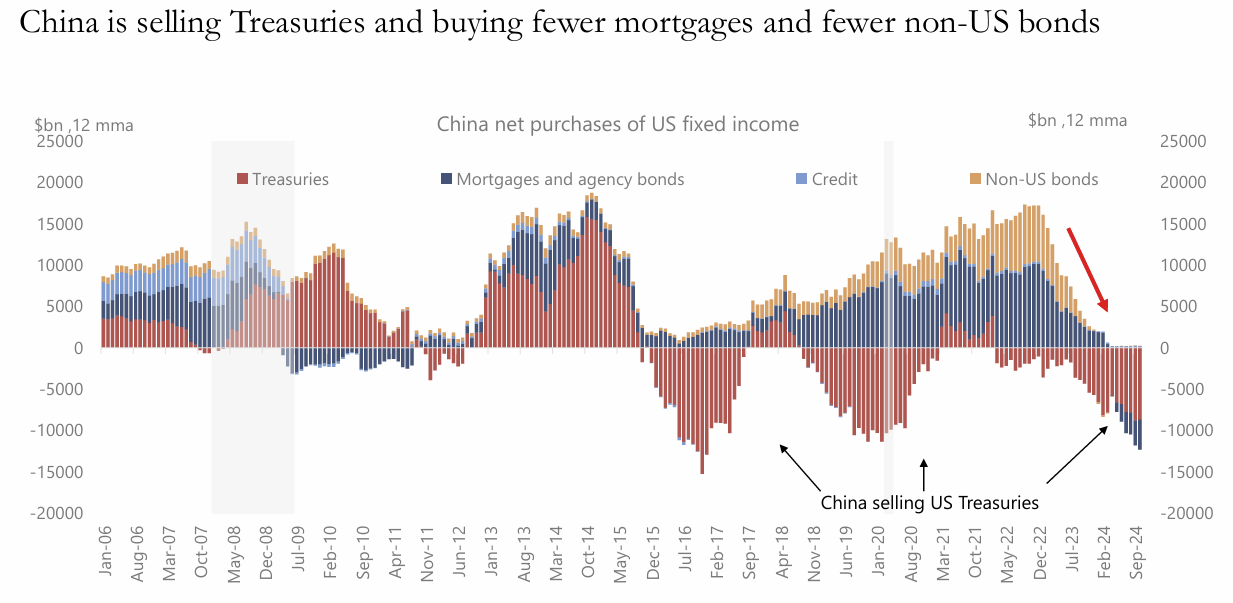
U.S. Treasury bonds have been a terrible investment over the last 100 years (from Meb Faber via X)…
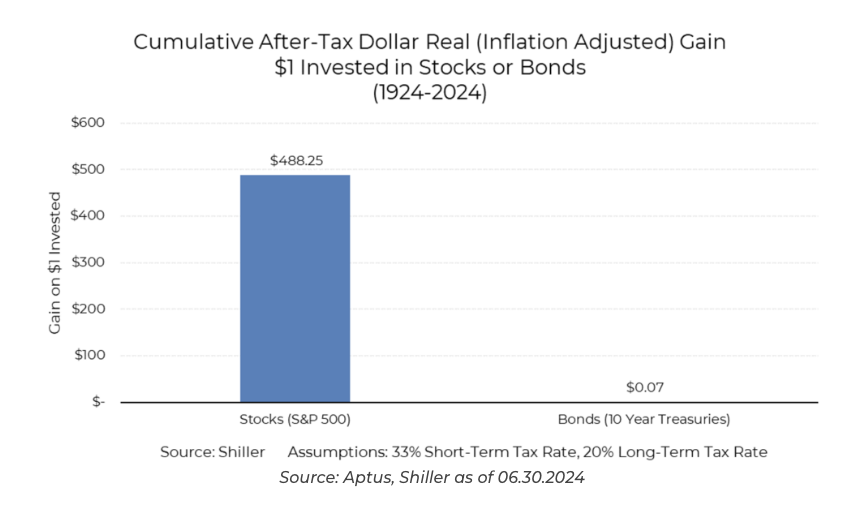
Why rising U.S. Treasury yields are a significant risk for stocks.
Corporate Bonds And Credit
Asset manager Apollo Global believes the credit markets will generally remain strong this year.
Credit spreads are near their tightest levels on record (from TopDown Charts via X)…
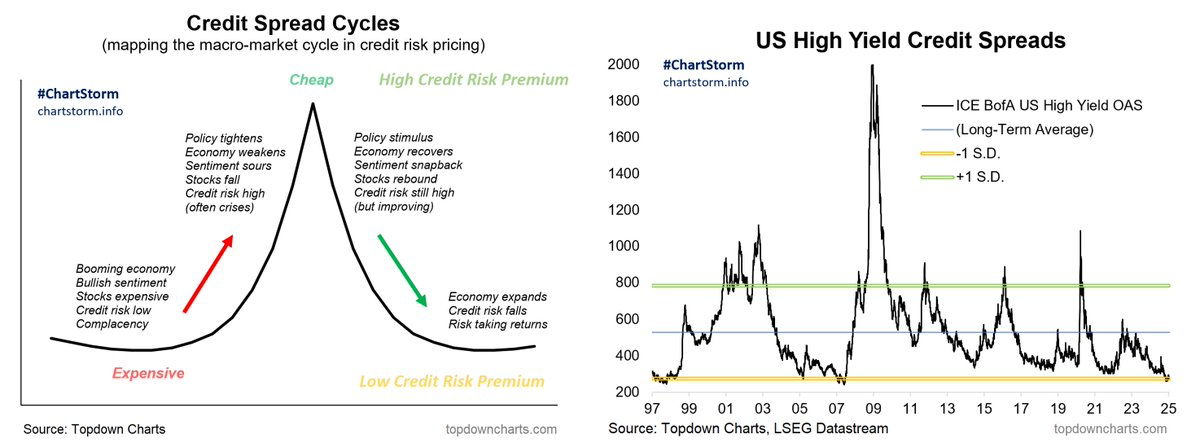
Consumer Credit
Soaring home and equity prices have pushed the U.S. household debt-to-asset ratio to 50-year lows (from Torsten Sløk in The Daily Spark)…
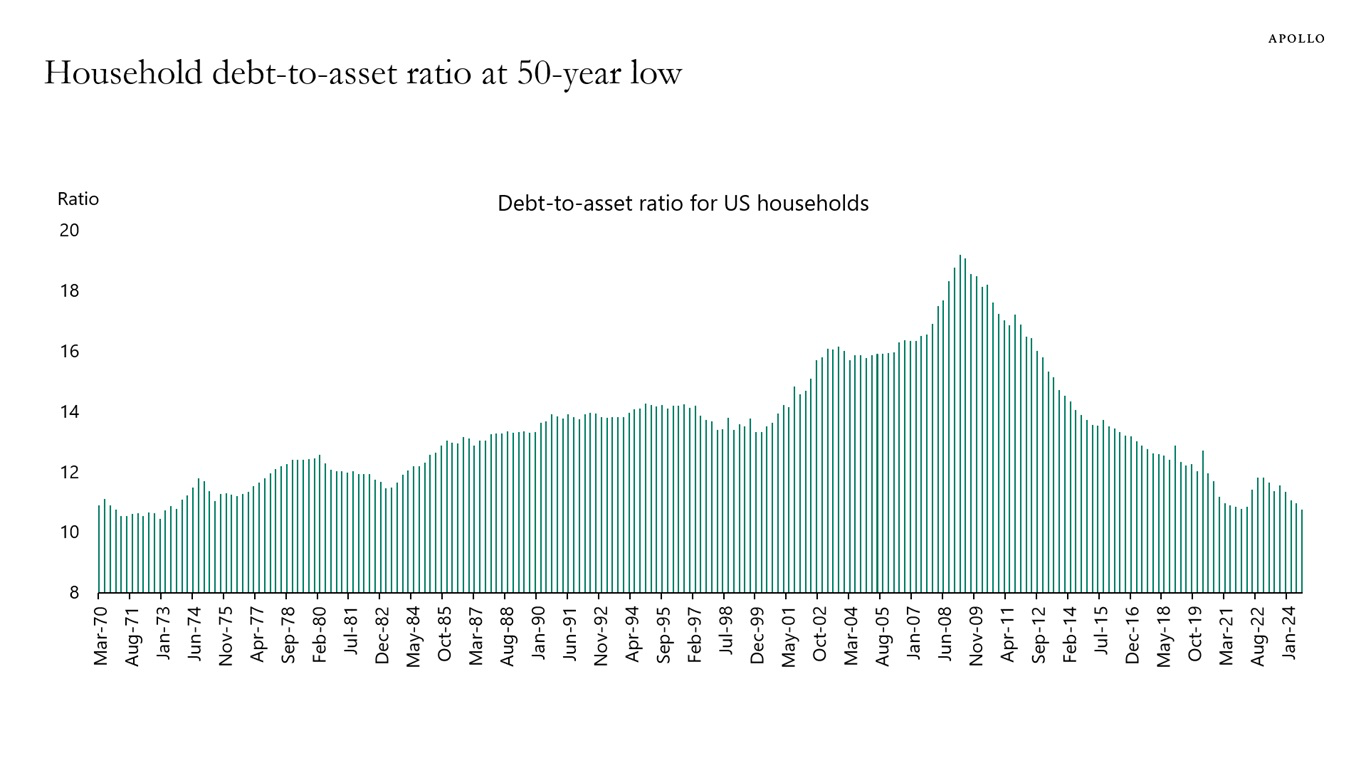
While many consumers are clearly beginning to struggle, “affluent” consumers appear to be doing better than ever.
Real Estate
America’s frozen housing market could finally start to thaw (from MarketWatch)…
The two major pieces of data that suggest consumers are begrudgingly accepting a new, more expensive housing market are the recent increase in home sales and the uptick in housing sentiment.
In October and November, the latest months for which data was available, home sales increased, according to the NAR.
That trend was broad-based: The number of homes sold across most of the nation grew between October and November as buyers snapped up properties during a brief period of time when the 30-year mortgage rate fell close to 6%.
The median price of a home sold over that period was $406,100, which was up nearly 5% from the same month a year ago.
Additional data suggested that more buyers were on their way. Pending home sales, which refer to contracts signed a month or two before a home is sold, also rose in November in most regions.
At that point, Yun said, “consumers appeared to have recalibrated expectations regarding mortgage rates and are taking advantage of more available inventory.”
Meanwhile, in a recent survey of consumers by the housing-finance giant Fannie Mae, consumer sentiment ticked up over the course of 2024, even though people were “discouraged” by soaring home prices and mortgage rates over the past few years, said Mark Palim, the company’s chief economist.
That “may reflect a slow acclimatization to the generally less-affordable market conditions,” Palim said.
Part of the optimism, however, was driven by an expectation that rates would fall over the next 12 months. And the data did not indicate a sea change in terms of attitudes toward buying a home: Only 22% of consumers said it was a good time to buy.
Continue reading here (subscription may be required).
The average rate on 30-year fixed-rate mortgages finally crept past 7%, the first time since May, despite the Fed’s three rate cuts since September (from Michael A. Gayed, CFA via X)…
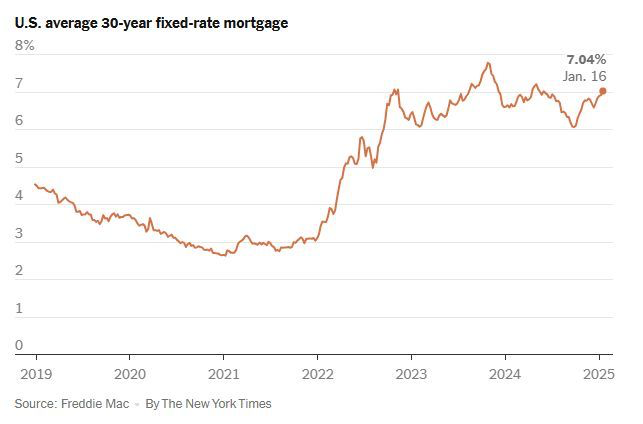
This burgeoning trend could “unlock” a significant amount of housing supply.
The U.S. housing market has become incredibly “bifurcated.“
Special Situations: Activist Investing, Spinoffs, Arbitrage, Mergers and Acquisitions (M&A), And More
Activist investor Starboard Value takes a “significant” stake in Bitcoin-mining company Riot (from The Wall Street Journal)…
Riot, based in Castle Rock, Colo., has a market value of nearly $4 billion, with its stock price down almost 25% year to date, even during a broad cryptocurrency rally.
The exact size of Starboard’s position couldn’t be learned.
As a crypto miner, Riot uses high-powered computers to process bitcoin transactions by solving complex mathematical problems, receiving bitcoin as payment.
Starboard has been in discussions with Riot’s management team to push the company to convert some of its bitcoin-mining facilities into capacity for so-called hyperscalers, or large data-center users, the people said.
Hyperscalers are companies that operate large-scale data centers designed to handle massive amounts of computing power and storage capacity. Data centers operated by companies such as Amazon Web Services and Alphabet’s Google Cloud have grown increasingly important as the artificial-intelligence boom gobbles up even more computing power and resources.
In a statement Thursday, Riot said it had spoken with Starboard on several occasions and welcomed its input, as well as the views of other shareholders.
“We are committed to creating value for all shareholders, and we look forward to constructive dialogue with Starboard on ways to achieve this shared goal,” the company said.
The context
Riot’s share price came under pressure this year while the company was pursuing a merger with another bitcoin miner, Bitfarms. Riot built a nearly 20% stake in its rival in hopes of forming the largest publicly traded bitcoin miner, but talks for a full sale didn’t result in a deal. Riot later struck a settlement with Bitfarms in September for a spot on the board.
Crypto companies have rallied since the November presidential election, fueled by hopes for more friendly regulations under the incoming Trump administration. Riot shares still have trailed the massive gains at others in the sector, including MicroStrategy and Coinbase.
Starboard would like to see Riot take a similar path as bitcoin miner Core Scientific, which has been working with CoreWeave—an Nvidia-backed startup—to supply power infrastructure for the cloud-computing company’s operations, the people said.
Continue reading here (subscription may be required).
A potential multi-bagger stock with a net cash position of 2x its market cap and plenty of upcoming catalysts.
President Trump announced plans to “environmentally free up our rare earth minerals,” and this company could be a huge beneficiary.
Here’s a list of new activist reports and notable executive departures disclosed this week.
Activist firm Trian Partners sees 200% upside in this stock with operational changes and a better valuation multiple.
Precious Metals
Last year was only the fifth time in history that gold has risen along with real interest rates, but we’ve never seen such an extreme.
Gold equities are the cheapest they’ve been in over 40 years despite record gold prices and cash flows (from Brandon Beylo via X)…
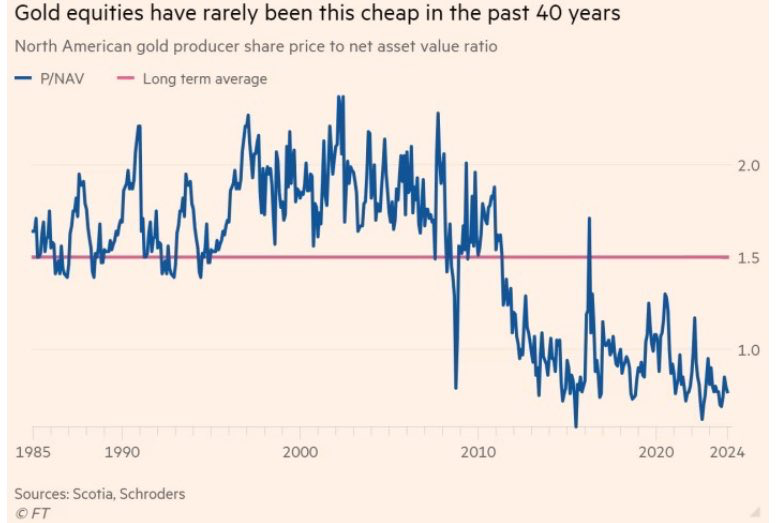
The simple way gold could help fix the U.S. government’s debt crisis.
Gold made another all-time high this week, with spot prices breaking $2,800 per ounce for the first time and futures surpassing $2,850. The precious metal is now up more than 40% over the past 12 months.
Energy
Energy-focused hedge fund Bison Interests’ bullish case for natural gas in 2025.
U.S. fracking activity is rolling over (from The Daily Shot via X)…
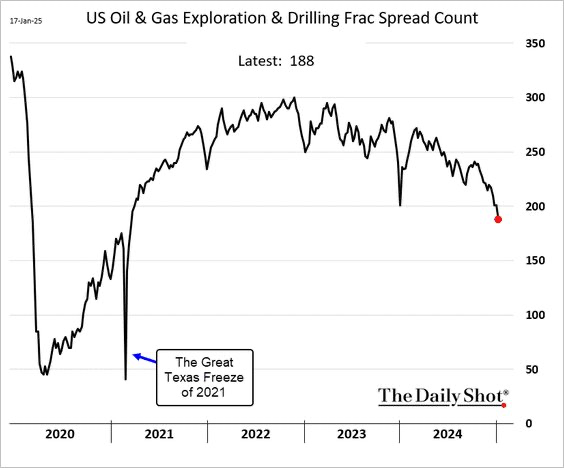
Following President Trump’s executive order to unleash American energy dominance, the U.S. Department of Energy has ended the LNG exports pause and is returning the department to “regular order.”
Bank of America (BAC) analysts no longer expect an oil market surplus in 2025.
Bitcoin And Crypto
$10 trillion asset manager BlackRock (BLK) officially recommends an allocation to Bitcoin.
Here’s a detailed look at MicroStrategy’s (MSTR) $2 billion preferred stock offering.
Why “companies buying Bitcoin” is an overlooked megatrend.
The U.S. Security and Exchange Commission’s (“SEC”) new crypto policies represent a “sea change” versus the past four years.
New U.S. Treasury Secretary Scott Bessent personally owns up to $500,000 in Bitcoin.
BlackRock CEO Larry Fink says Bitcoin could rise to $700,000 if there are continued fears of currency debasement and economic instability.
The SEC’s Staff Accounting Bulletin 121 – also known as “SAB 121” – has been rescinded, meaning U.S. banks can now custody Bitcoin for the first time.
Here’s what every investor should know about Bitcoin and the risk of “rehypothecation.”
BlackRock has filed for “in-kind redemption” for their Bitcoin ETF, meaning investors could soon redeem their shares for actual Bitcoin instead of cash.
Bitcoin continues to trade near all-time highs, but retail interest is the lowest it’s been in three years (from Miles Deutscher via X)…
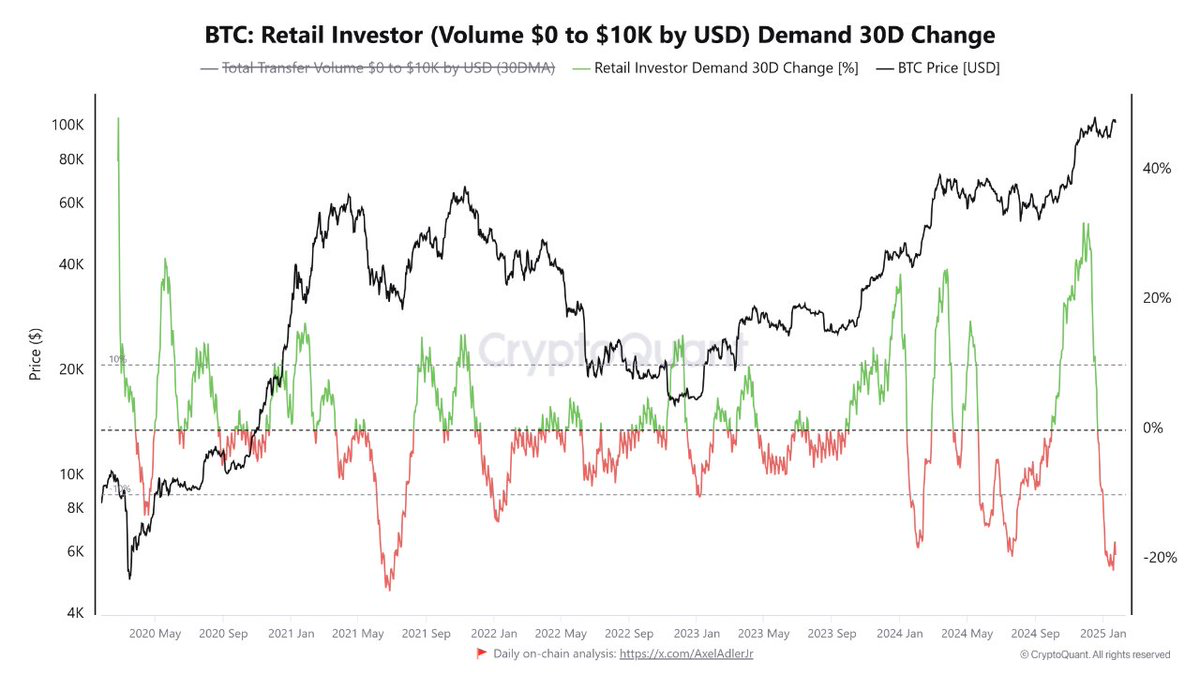
MicroStrategy Chair Michael Saylor continues to add Bitcoin to his company’s balance sheet aggressively. It now holds 471,107 $BTC acquired for ~$30.4 billion at ~$64,511 per Bitcoin.
Fund managers are reportedly preparing to deploy significant capital into digital assets.
Czech central bank head wants it to buy “billions of euros” in Bitcoin (from Financial Times)…
The head of the Czech National Bank wants to plough billions of euros’ worth of the country’s reserves into bitcoin, a groundbreaking move that could make it the first western central bank known to hold crypto assets.
Governor Aleš Michl told the Financial Times that he would present a plan to the board to invest in bitcoin as a way of diversifying the CNB’s reserves at a meeting on Thursday. Should the board approve this, then the CNB could eventually hold as much as 5 per cent of its €140bn of reserves in bitcoin, he said.
While acknowledging bitcoin’s “extreme volatility” and limited record, Michl highlighted wider investor interest in bitcoin since BlackRock and other companies last year launched bitcoin exchange traded funds.
He also pointed to US President Donald Trump’s pledges on deregulation and the growing influence of cryptocurrency executives over his administration. In an executive order last week, Trump set up a working group to evaluate the creation of a national digital asset stockpile.
Continue reading here (subscription may be required)
Porter & Co.
Stevenson, MD